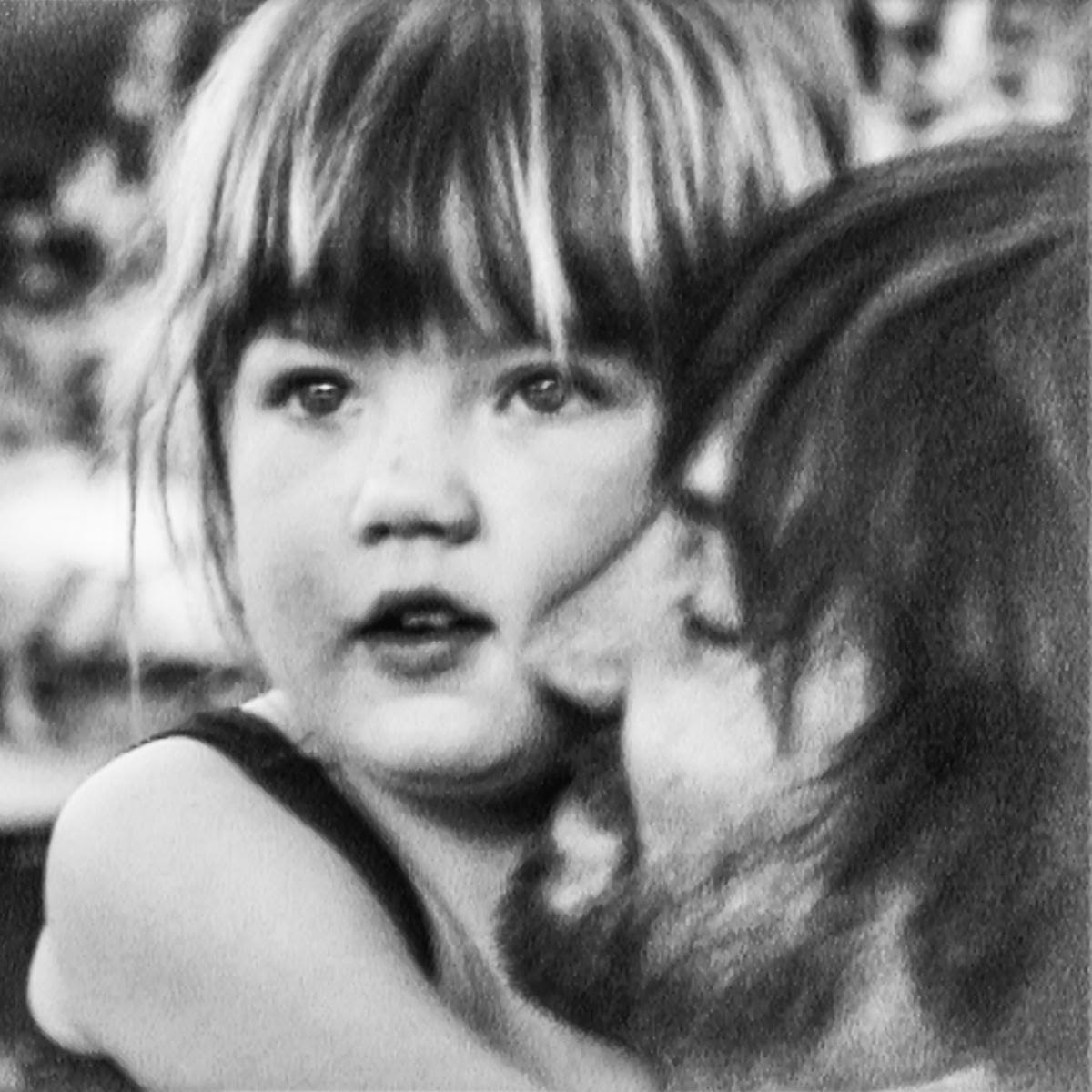There aren't many reasons why a finished album would never be released to the public. Most available explanations might involve irreconcilable differences between an artist and his record label, or, even more likely, bureaucratic forces beyond the artist's control. But none of that explains the story of Caustic Window, the so-called "lost album" produced by electronic music deity Richard D. James (aka. Aphex Twin) under his lesser-known Caustic Window alias and thought to be scheduled for release in 1994 via his own Rephlex label. The record has achieved a sort of mythic status in forums and diehard electronic circles thanks to a 1999 interview in which Planet Mu boss Mike Paradinas described the unreleased record, detailing each of the 16 tracks like an impromptu album review. He also revealed that only four test pressings of what was then known as CAT023 (its catalog number in the Rephlex discography) existed in the world, and that it would never be officially released by James or his label. But he never explained why, so, of course, fans have spent the better part of the past two decades wondering how such a prolific artist, who has released 50-plus records under a litany of monikers, could shelve a finished LP in the middle of readying it for mass production. Was this some kind of elaborate gag from the Cornish prankster? Two of the album's tracks were already featured on two separate compilations, and Paradinas was very specific with all of his descriptions, so the music almost certainly did exist. Maybe this was a matter of quality control, then? RDJ is rumored to have stacks of tapes and massive hard drives full of unreleased albums; he could've simply got cold feet while going through CAT023's release process—artists lose interest and confidence in their material all the time. And if that's the case, how good could an unwanted album from a C-list Aphex Twin moniker really be?
Fast-forward to yesterday afternoon, when the much-ballyhooed Kickstarter campaign finally delivered the Holy Grail of electronic music to the 4,124 people who donated at least $16.00 toward having a test press copy of CAT023 professionally ripped onto lossless digital files. The news arrived in an email that some had been waiting to receive for almost 20 years. Others perhaps only had to wait since they discovered the project in spring of this year, but the excitement was nonetheless palpable across the board. Having backed the campaign myself, I promptly followed the link to nab my one-time download of Caustic Window. I unzipped the folder on my computer with twitchy fingers and an almost childlike glee, imported the files to my iTunes, and proceeded to comb through the metadata. There I noticed a new bit of information: The year attributed to the music is 1996, not 1994 like Discogs had led us to believe. Mildly confused and driven by a distinctly 21st-century urge to know for sure, I decided to look into whether or not this was a typo, and, appropriately enough, I found the answer I was looking for on We Are the Music Makers, the go-to electronic music forum partially responsible for bringing Caustic Window to light. Site administrator Joyrex confirms that the new date is indeed correct, saying, "[Caustic Window] was planned for release in June 1996 according to old Rephlex info/docs." Suddenly, things started to make a whole lot more sense to me.
Aphex Twin's monumental Richard D. James Album was released on November 4, 1996, courtesy of Warp and Sire, a label owned by Warner Music Group. When considering the parties involved and the size of that legendary release, it seems entirely possible that RDJ would've been contractually unable to release his Caustic Window LP at the time he had originally planned. At the very least, maybe he didn't want to muddle the landscape that his Richard D. James Album would enter with an entirely different facet of his vast production skills. And as time went on, perhaps James no longer felt the need to pay the manufacturing and distribution costs needed to bring the delayed album to the world via his own label, allowing the proverbial window of opportunity to close for good on a project that ceased to feel necessary. The explanation sounds logical enough, but it makes the assumption that James specifically decided to never allow his rabid fanbase to hear the entirety of Caustic Window -- that is, until he signed off on this year's unprecedented Kickstarter deal. But why keep the whole thing under wraps for 20 years? Had the delay gone on long enough that Caustic Window fell in with RDJ's overall reclusiveness and eventual disappearance from music? Is there a chance that these tracks have aged so poorly that their creator became embarrassed of them? In 2014, does the world really need a vintage acid-house album released nearly two decades after the fact?
The thing is, though, just about zero of those questions feel like they need answers while you're in the middle of listening to an album with a legitimately epic backstory like Caustic Window's. After all of the time and trouble it took to get the music into people's hands, feeling skeptical about any aspect of the first unheard Richard D. James tracks revealed in nine years would be missing the sheer magnitude of the situation. Thankfully, Caustic Window is also strong enough to assuage any idea that it was shelved as a means of quality control, which is quickly and confidently confirmed by opening track "Flutey." A plush, quick-bouncing drum machine is the first sound we hear on Caustic Window's self-titled album, and it gradually grows into a deep, ambient-tinged dancefloor groove marked by spritely flute sounds and a funky bassline. The music sounds crisp and punches with the warmth of old-school recording and mastering processes, but even if these tracks weren't steeped in vinyl crackle and running just a touch in the red from time to time, they would still be unmistakable as classic Aphex Twin material on par with his Analogue Bubblebath series, or, at times, even the canonical Selected Ambient Works 85-92 LP.
What's perhaps most rewarding about Caustic Window is that -- in contrast to Compilation, the 1998 collection of Caustic Window's three Joyrex EPs—its sizable tracklist offers an eclectic selection of RDJ's inimitable styles. The sinisterly playful and frenetic "Popeye" is a rugged cut of beat work that zips by like a prototype of Richard D. James Album's "INKEY$." Soaked in buzzy acid sequences and bolstered by glowing piano chords, the breathtaking "Squidge in the Fridge" marries elements of classics like "Ptolemy" and "Heliosphan" under the moonlight of ambient techno. Heavy, hard-edged jams also fill out Caustic Window's hour-plus runtime. Between intensely distorted bangers like "Stomper 101mod Detunekik" and "AFX Tribal Kik," the dystopian cyber-rave of "Revpok" and "Airflow," and previously released atonal assaults "Phlaps" and "Cunt," James was sure to stay true to the vibe of his original Caustic Window material when he assembled this LP's diverse tracklist 20 or so years ago. Anyone on the prowl for some real Aphex acid will find themselves a healthy share of proper choons on this LP.
It became exceedingly clear to me during my initial listen of Caustic Window that there have been a large number of timeless Richard D. James productions collecting dust on the CAT023 test pressings all of this time. "Fingertrips" is a queasy, 808-fueled gem that would've reigned over the underground rave scene had it been released in the '90s. "Mumbly" and "Fingry" ride the same kind of neon-hued wavelength, but take that warehouse-ready vibe further into the dark with shadowy dancefloor beats, incandescent synth pads, and the sense of unbridled experimentation that has fueled RDJ's entire illustrious career. Perhaps the biggest surprise, however, is "101 Rainbows (Ambient Mix)," a wispy and beatless synth composition that ushers out the final quarter of Caustic Window. Almost nine minutes long, the piece plays like a Steve Reich or Philip Glass classic, folding together tapestries of weightless arpeggiations and weaving gossamer flute sounds through the synthetic patchwork. It's impossible to say which of Caustic Window's tracks will eventually outlive the excitement and media frenzy around their release—though, if I had to put my money on it, I'd say "101 Rainbows (Ambient Mix)" is the strongest contender. But regardless of past, present, or future accolades, lingering questions, and potential volumes of unreleased music, the fact of the matter is that we now have a brand-new and sizable chunk of Richard D. James' recorded work readily available for us to hear. It may be released under the name Caustic Window, but many of these tracks are pure Aphex Twin magic that would've been an integral part of his collective legacy had they appeared in 1996. As such, it's sort of unbelievable that we actually have these songs at our fingertips now, and we should cherish Caustic Window like the unearthed treasure it rightfully is.






